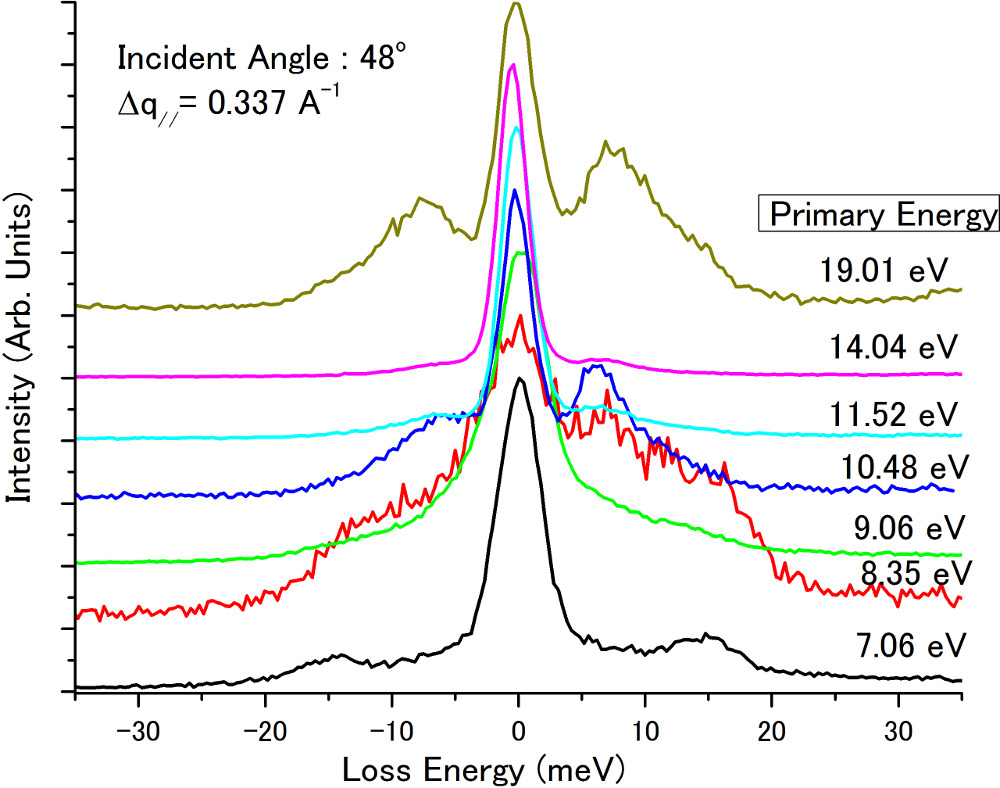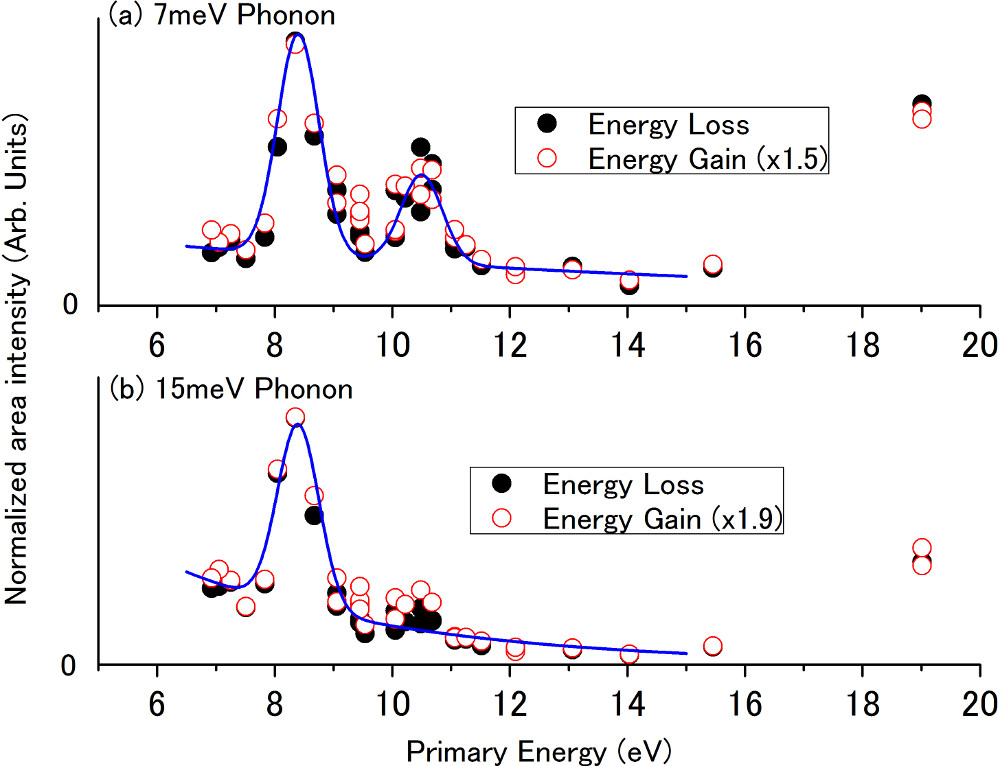
Figure 1: HREELS spectra of HOPG graphite at various primary energies.

Figure 2: Primary-energy-dependence of the intensities of the two phonon modes normalized for the elastic peak.
Poster
Proposal of a new scattering mechanism in the electron energy loss spectroscopy: A case study in graphite
1ISIR, Osaka Univ., Japan
2ISSP, Univ. of Tokyo, Japan
High-resolution electron energy loss spectroscopy (HREELS) has been widely employed for investigating not only the vibration of the adsorbates but also the phonon dispersion of the solid surface [1]. Three mechanisms are known so far for the inelastic scattering of the electron; dipole scattering, impact scattering, and negative-ion resonance scattering. Here we propose a new electron scattering mechanism based on the HREELS experiments concerning the phonon in graphite.
Figure 1 shows the HREELS spectra of the HOPG graphite for various primary energies of the incident electron at room temperature. The incident angle was 48˚ from the surface normal and the detection angle was chosen so as to probe the phonon of the constant momentum (0.34 A-1) for all the primary energies. Intensities are normalized by the elastic peak intensity. Two peaks are observed at 7 and 15 meV, which are attributed to the interlayer ZA and ZA' modes of graphite by comparing a series of angle-resolved spectra (not shown here) to the phonon dispersions in previous literatures, on both sides of the elastic peak. Peaks at the negative (gain) and positive (loss) energies correspond to the absorption and emission of phonons, respectively. In figure 2, the intensities of the two peaks are plotted as functions of the primary energy. The two modes of phonon clearly show resonance-like behavior in different manners to each other. They cannot be explained by the dipole or impact scattering mechanisms, and a new mechanism for the probing of the phonon, analogous to the resonance scattering for the molecular vibration, is required. In the proposed mechanism, the electron is trapped in the unoccupied band when the energy and momentum match with it, and the electron-phonon interaction may provide the scattering of the electron into another unoccupied band. The efficiency of the scattering should depend on the characters of both the phonon and electron bands, thus the intensity of the phonon in the HREELS spectra may strongly depend on the phonon mode and the primary energy. Note that the obtained ratios in intensity between the emission and absorption of phonons are nearly constant all though the primary energies [Fig. 2], and they (1.5 and 1.9 for 7 and 15 meV phonons, respectively) approximately agree with theoretical values (1.3 and 1.8 at 300 K) derived by a formula as [1+n(ω,T)]/n(ω,T), where n(ω,T) is the occupation number of the phonon obeying the Bose-Einstein distribution. This fact strongly suggests that the observing phenomenon is not due to any experimental errors.
The HREELS spectroscopy involving this mechanism may provide information about the matrix element of the electron-phonon interaction at the surface with resolving both the energy and momentum. Therefore this may lead to a deeper understanding of many interesting and important phenomena at the surface, e.g., surface superconductivity, where the electron-phonon interaction plays a crucial role.

Figure 1: HREELS spectra of HOPG graphite at various primary energies.

Figure 2: Primary-energy-dependence of the intensities of the two phonon modes normalized for the elastic peak.
[1] Ibach and D.L. Mills, Electron Energy Loss Spectroscopy and Surface Vibrations. Academic Press, New York (1982)